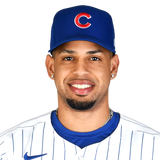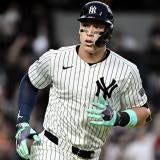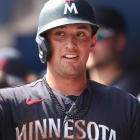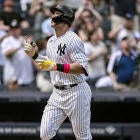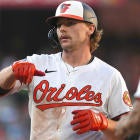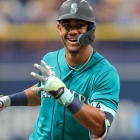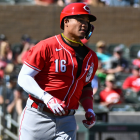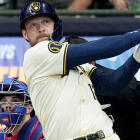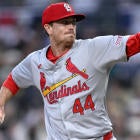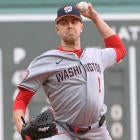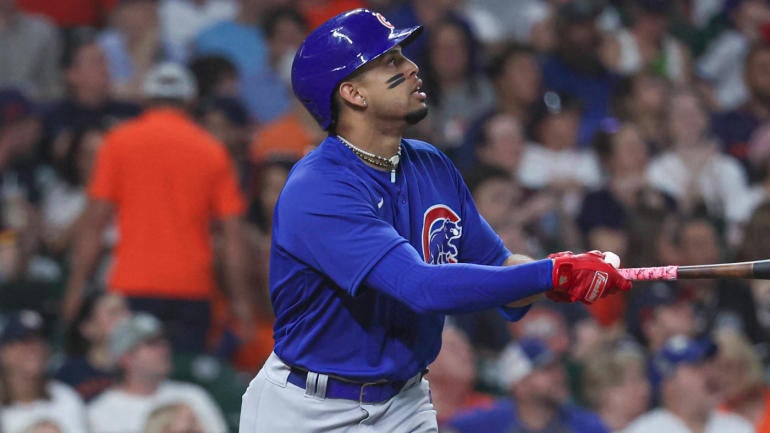
Christopher Morel's pace is, of course, stupid. He's been up for 11 games and homered in eight of them. If he continues at that rate, with the Cubs having 116 games left, he'll hit 95 home runs.
News flash: He won't hit 95 home runs. Everybody, no matter how new to Fantasy Baseball, would dismiss the possibility as absurd. So then, simply observing that Morel is playing over his head doesn't automatically make him a sell-high candidate. For me, it's more a matter of magnitude and stature.
Has this performance raised Morel's stature to the point he's desirable enough to sell?
I'm referring to perceived value, which is what matters more than actual value in a trade scenario. What you want is a misalignment of the two. When actual value exceeds perceived value, it's a buy-low opportunity, and when perceived value exceeds actual value, it's a sell-high opportunity.
So how do you know if the misalignment is there? Yes, perceived value is closely tied to performance, but again, nobody believes Morel is actually going to hit 95 home runs. Ultimately, it's a subjective measure, with performance serving as the primary but non-exclusive input. And like any subjective measure, it's subject to interpretation. You can't actually know how a player is perceived until you begin fielding offers for him, which is why I default to "it doesn't hurt to shop him" whenever the sell-high question is raised.
| ||||||||||||
But that's not exactly true, is it? There are logistical consequences to shopping a player whose perceived value doesn't present a sell-high opportunity. I can't speak to how much time you have or how much rejection can you stomach, but it goes without saying that shopping a player will test both.
So in the likely case that testing the market isn't a viable option, you can instead look for clues. Here are three that can help us gauge how Morel is perceived right now.
- Clue No. 1: He was hitting .330 with 11 homers and a 1.156 OPS at Triple-A and generating some buzz even before his call-up. Out-of-nowhere production is one thing, but Morel's was anticipated and is backed up, to some degree, both of which serve to raise his stature.
- Clue No. 2: He took off like a rocket ship last year, too, batting .283 with an .836 OPS in his first 40 games, before fading into obscurity with a .197 batting average and .667 OPS over his final 73. The initial hype for prospect call-up is so, so difficult to recapture, and we may still be in the earliest stages of Morel making believers out of everyone again. Further evidence of this is ...
- Clue No. 3: It's taken most of this 11-game stretch for Morel's roster rate to climb to a point where the conversation shifts from must-add to sell-high. Generally speaking, you're not going to convince someone to trade for a player he could have had off the waiver wire yesterday -- and I do mean yesterday. I just picked up Morel in a couple leagues myself.
So it's kind of a mixed bag, then. Morel was already a player of some stature prior to this hot streak, but his reputation wasn't universally positive and the buy-in has been relatively slow.
It's that last clue that's the most compelling to me. How realistic is it to sell high on Morel when everyone just got on board with the idea that he needs to be rostered at all?
My initial idea for this article was to highlight a few sell-high hitters just as I did for pitchers a couple weeks ago, but I couldn't find enough to justify it. One reason is because our understanding of what makes for a good hitter still trails behind the same for pitchers, but the bigger reason is because the hitters I do feel comfortable calling overachievers are in the same boat as Morel. Their success has met less with enthusiasm than begrudging acceptance that still hasn't fully peaked. Examples include Jarren Duran (75 percent rostered), Taylor Walls (74 percent) and Ezequiel Duran (72 percent). Among those rostered in more than 90 percent of leagues, only Thairo Estrada and Jonah Heim are at risk of slumping their way out of it, in my estimation, so I guess if you have them, get to shopping.
But as for the others, Morel included, the returns may not be worth the trouble. Better to sit back and enjoy the ride.
Unless, of course, I think that ride is headed for ruin.
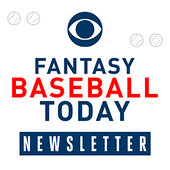
Fantasy Baseball Today Newsletter
Your Cheat Code To Fantasy Baseball
You're destined to gain an edge over your friends with advice from the award-winning FBT crew.
Thanks for signing up!
Keep an eye on your inbox.
Sorry!
There was an error processing your subscription.
So how much will he regress?
We've already established that Morel is unlikely to fetch a true sell-high return, meaning one that locks in his hypothetical value. If you try it, you may find someone just salivating at the thought of acquiring him, but it's unlikely. What comes next is determining if he's worth trading for ... anything at all. Yes, he's hot right now, and you were the one to get to him first. But if you think he's just a flash in the pan, as he was last year, it might be worth it to settle for 50-75 cents on the dollar.
And there's legitimate reason for skepticism. For as good as Morel has looked so far, for as hard as he has hit the ball and for as red as his Statcast page is, he still has the same glaring flaw that many would argue brought him down last year. He's striking out in excess of 30 percent of the time -- well more, in fact. As of Monday, he was at 37.5 percent.
It's rare that a hitter finds success with a strikeout rate anywhere near that high. Last year, the only one to get even 300 plate appearances was Joey Gallo, who hit .160. Say we lower the threshold to 30 percent, which would represent considerable improvement for Morel, the high mark for batting average was .248 (J.D. Davis). Only Byron Buxton had an OPS over .800.
The 2021 season offered a few more success stories -- guys like Javier Baez, Franmil Reyes, Tyler O'Neill, and Adolis Garcia -- but again, that's using a 30 percent strikeout rate as the threshold. Morel was barely doing that even at Triple-A.
And yet ... he was batting .330 there. One proven way to make up for low-quantity contact is with high-quality contact. It's what those exceptions from the past all had in common, and Morel exhibits many of the same traits. His 93.5 mph average exit velocity may be too good to be true, as much a symptom as the cause of his eight home runs in 11 games, but even in the short time he's been up, his max exit velocity is 92nd percentile. Something like a .260 batting average may be on the table for him, and his power and speed would take care of the rest.
The most likely scenario, I think, is that Morel fades much like he did last year and loses his grip on the starting job. That's the justification for selling, even if it's not necessarily at face value. But the second-most likely scenario is that he's good enough to remain a must-start player the rest of the way.
And now you understand the predicament. Morel has considerable upside, the kind that made him worth pursuing in the first place, but he also has a potentially fatal flaw that would justify you cashing out while he's going well. The problem is that everyone knows it. They saw it play out last year, and they were reluctant to buy in this year for that reason.
My recommendation, then, is to shop, but don't settle. If you find an offer to your liking, treat it as a pleasant surprise. You have a lottery ticket with five of the six numbers turned up already, so even if the odds still aren't especially in your favor, it might be worth it at this point to see it through.



